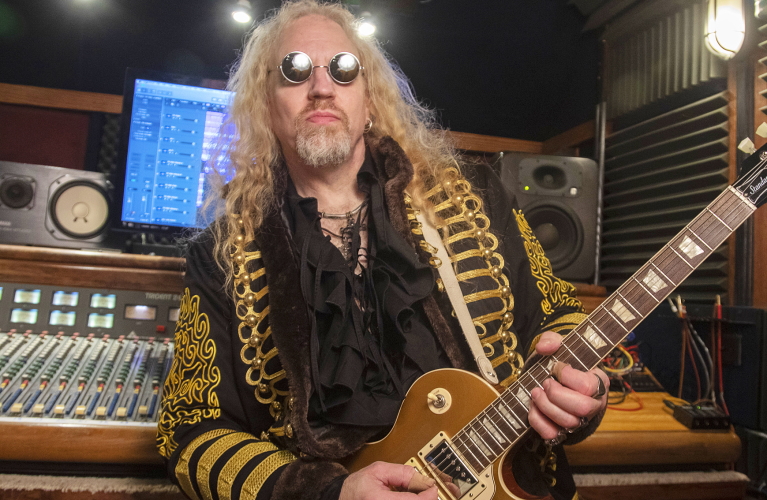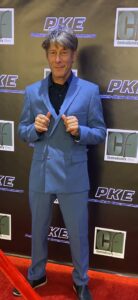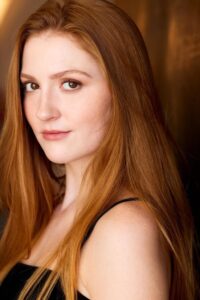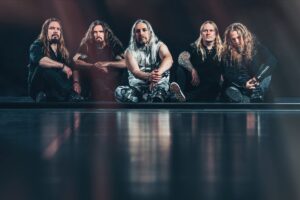Brian Tarquin – Brothers In Guitar Arms
8 min read
1. Why did you decide to release the album “Brothers In Arms”?
Larry Coryell once told me in the studio that “we as musicians have to do as much as we can through our music to make people aware of social issues.” I actually have 3 ‘Heavy Friends’ themed releases, Guitars For Wounded Warriors, Guitars For Veterans & Brothers In Arms. The whole series was created to honor our service men and women and of course veterans. I wanted to bring awareness to veteran’s issues as posttraumatic stress disorder, depression, anxiety, substance abuse, and health issues. Homelessness is one of the end results of some of these issues and is heart breaking because these men and woman have put their lives on the line to keep us all safe at home.
2. How did you decide to approach all these important guitar players to participate on the album?
I love collaborating with other guitarists on special projects for helpful causes. I’m always trying to outdo myself with composing and guests on my records. Because I’m a guitar instrumentalist I always have to make sure the message comes across in the music, that’s why I hand pick the guests for each track. All of the guest guitarists are seasoned instrumentalists as well, which makes it a perfect fit. So, I wanted to create an instrumental studio version of benefit projects like ARMS Charity Concerts envisioned by Ronnie Lane for multiple sclerosis and Hear ‘n Aid by Dio for famine relief in Africa. Except Brothers In Arms is a veterans relief project.
For years I have had an NPR radio show called Guitar Trax on WFIT 89.5FM in Florida where I have interviewed many of the guitarists on the album, which helped to build a musical rapport between us. I have spoken to Joe Satriani in detail a couple of times in the past for the show and we hit it off, so I asked him if he would be willing to guest on a track for Brothers in Arms. I wanted to compose something special for him and for the album to give the listener a real treat. So, as I was composing “Speed of Sound” I imagined a scene in the deserts in Iraq where the skies were blackened by a sandstorm as American troops were lost in the valley of death trying to get back to safety. I wanted to paint a feeling not only of great aggression but also a scene of desperation and dramatic emotions. Sure enough Joe really liked the track and within 2 weeks he sent me back the final solo you here in the song.
3. What is your current work in film, television, and other formats?
I am currently composing for Telepictures/Warner Brothers for several of their shows. I also have a publishing deal with Sonoton/APM Music (owned by Sony and Universal music) for worldwide distribution of my catalog for TV/Film and media placement. The catalog is called 1st Choice Music containing 30 CDS under the large German music company Sonoton.
4. What were the advantages and disadvantages of recording and producing the album in your recording studio?
To be honest I can’t recall any disadvantages because I have a very unique mobile recording studio called Jungle Room Studios housed in a 28-foot custom made trailer. It was designed in Southern California equipped with 2 separate rooms, a live room and a control room. The studio features a modified 1986 British Trident 24 recording console, an Otari MTR 90 2” Analog Tape Machine, a Ampex 440c 1/4” 2 track analog tape machine, and a variety of classic outboard gear such as, the Neve Compressor 33609, Rupert Neve Designs Portico II Master Buss Processor, Neve 1074, Chandler ltd Germanium Compressor, and a host of other gear.
5. Did all the musicians record in your studio, or did they just send you the recordings?
Because I started the project before the Pandemic, I had my drummer Reggie Pryor record a lot of the final drum parts live in the studio. But most of the guest guitarists on the album emailed me their tracks because much of the recordings were done over the lock down of 2020-21. I was speaking with a lot of the guests and going full bore on recording and production during this time. I always wanted to work with one my heroes Joe Satriani and this album gave me the opportunity. This project also had me work with other world class shredders I hadn’t before like Vinnie Moore of UFO and Jeff Duncan of Armored Saint.
6. What are the challenges of designing and implementing a big project such as “Brothers In Arms”?
Because it is instrumental music, it can be very difficult to get across to the general public at times. There are no words or lyrics that they can relate to in the song. I always like to make the music thematic, describing some sort of story to the listener. This helps a lot to keep their attention and interest in the song. So, with all this in consideration I chose the guest artists very selectively. I concentrated on guitarists who specialize in instrumental music, because composing instrumental music is very different than writing lyrical songs. I would also compose each track specifically for that guest artist’s style. I learned this craft during my contemporary jazz solo days, seeing how people reacted to my music, both radio music directors and listeners.
Of course, there is the logistical issue of aligning everyone’s schedule for recording their parts. But doing it virtually helps because they can record their parts on their own time. The Pandemic really put everyone at home with time on their hands, so it worked out for this project. In fact, for the song “Hounds of Hell” I hired the Budapest Orchestra to record the string parts live in Europe. This was an elaborate process by getting proper orchestra charts and making sure all of the instruments are orchestrated correctly. Once they were recorded in Budapest, I had to fly all of the instruments into the final session and mix. It took some doing but I am extremely pleased with the final outcome.
7. What type of gear did you use for the recordings?
GUITARS
Guitar wise I used my 2020 Gibson Les Paul Standard Goldtop Triple Burstbucker pickups, 2020 EVH Striped Series Shark Burgundy, 2020 Fender Jimi Hendrix Stratocaster Signature with Seymour Duncan Hendrix Signature Pickups, 2019 Fender Jeff Beck Signature Strat, 1997 Gibson Les Paul Custom Shop, 1978 Gibson Les Paul Goldtop Deluxe, 1983 Kramer Baretta super Strat, 1999 Guild Acoustic DCE 1 guitar with L.R. Baggs Dual Source Microphone pick-ups, 1998 Ovation Celebrity 12 string and an SG I hand made over the Pandemic out of a mahogany wood block. I installed a Whole Lotta pick up in the bridge position and a Pearly Gates in the neck position. It sounds fantastic, conjuring up those classic Jimmy Page tones on the track “Hounds of Hell”. As for basses I used a 1989 Yamaha Attitude, 2020 Custom Rickenbacker 4003 Bass and a 2012 Ibanez 8 String RGA8.
AMPS
I used real tube guitar amplifiers on the recording of this album, no “I Can’t Believe It’s Not Butter” amp simulator plug-ins. For example, 1969 Fender Super Reverb, Marshall Plexi Head with Mark Cameron Modified High Gain, 1984 Marshall JCM800 2×12 combo, 1979 Mesa Boogie Mark IIb 1×12 combo, Rivera Quiana Studio 1×12 combo, Fender Prosonic head, EVH 5150 III head, 1985 Mesa Boogie Mark III head and a Mesa Boogie SOB head. I have an amp switcher that enables me to switch between any given amp head to any given speaker enclosure in a custom-made isolation booth I built in the studio. The booth contains a 1975 Marshall 4 x 12″ cabinet with vintage Celestion 30’s, 2014 Orange 2×12 cabinet with Vintage 30’s and an Ampeg MICRO-CL Bass Stack.
PEDALS
As for pedals I used a Dunlop Univibe, Snarling Dogs Super Bawl Whine-O Wah, Snarling Dogs Mold Spore Wah, Morley Classic Wah, Dunlop Talkbox, Tech 21 YYZ Geddy Lee Signature SansAmp, Keeley Ibanez Tube Screamer TS 808, EVH MXR Phase 90, DigiTech Whammy Pedal.
MICROPHONES
I would use the following microphones to record the amps, some in a live room and some in the amp booth. Beyerdynamics M160 Ribbon, Royer R101, SE Voodoo VR-1, Sennheisser 609, Electro Voice RE20 Cardioid Dynamic, Sennheiser MD-421, SE Z5600a II Tube Microphone, SE RT1-Ribbon Tube Microphone, AKG D112 Large Diaphragm Microphone. However, one of my favorites is always been the Beyerdynamics M160 Ribbon for amps for its clarity and durability. I have blown many a ribbon putting it front of a Marshall cabinet.
SIGNAL CHAIN
At the center of the studio is a modified 1986 Trident 24 Series 28 channel 24 bus w/TT patch bay with a custom made GMPS 18 Power Supply. I have all of the outboard gear hard wired into the Trident’s patch bay. So, for guitars I used the BAE 1073 Mic Pre with 1084 EQ section for the microphones and then patched directly into the Otari MTR 90 – 24 track 2″ Analog Tape Machine. Sometimes I would use the Trident’s built in preamps as well, depending on the track. I would not compress going to tape, but during mixdown I used the Rupert Neve 5043 Duo Compressor/Limiter on the rhythm guitar tracks and melodies. Another favorite compressor is Chris Yetter’s Audio Scape 76A Compressor & Audio Scape 6386 EDITION V-COMP MU.
8. Do you have archived material from these recordings that you intend to use afterwards?
Initially this album contained 19 songs altogether, however I broke it into 2 releases. The first Brothers In Arms which is the hard rock release out now and the second Brothers In Arms: DEUX which is a jazz fusion release, that will be out later in the year. I thought it was better to keep the songs into a genre-based grouping.
9. How did you decide to dedicate the album to the military soldiers who have fought for their country?
I have always had a special spot in my heart for military veterans. I feel they have always been forgotten in our world and taken for granted. I remember seeing homeless Vietnam veterans living in the subway and streets of New York City where I grew up in the 70’s. It was a disgraceful site because at that time no one seemed to care about veterans. So, I wanted to draw as much attention as I could to veteran’s needs and what better way than through music. I also wanted a very reliable benefit to donate to, so I did a lot of research and decided on the Fisher House Foundation.
My father Perry J. Browne, a Big Band radio disc jockey in the 40’s, was a World War II veteran serving in the South Pacific from 1943-1946 along with millions of other soldiers. He told many stories of his comradery with his fellow marines and how they all looked forward to the GI Bill. So, during college back in the 80’s I joined the ROTC (Reserve Officers’ Training Corps) for a while, serving a short stint in the military and doing basic training at Fort Knox. Even though I didn’t stay in the service, I always had a deep respect for the men and woman who serve.
People can donate to https://connect.fisherhouse.org/campaign/BROTHERS-IN-ARMS
10. What are your next music plans?
I have a fantastic follow up to this album called “Bothers In Arms: DEUX” which is in the jazz fusion flavor featuring another group of incredible musicians as Jean Luc Ponty (Mahavishnu Orchestra), Eric Johnson, Robben Ford (Miles Davis), Dean Brown (David Sanborn), Hal Lindes (Dire Straits), Chris Poland (Megadeth), Steve Morse (Deep Purple), John Tropea (Billy Cobham), Steve Kindler (Jeff Beck), Carl Verheyen (Supertramp), Larry McCray (John Mayall), Steve Morse (Deep Purple) & Phil Naro (Billy Sheehan). This should be out later in 2023.


